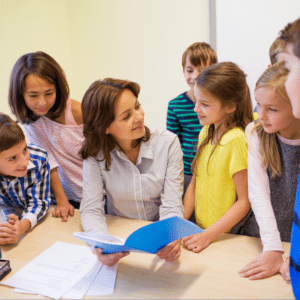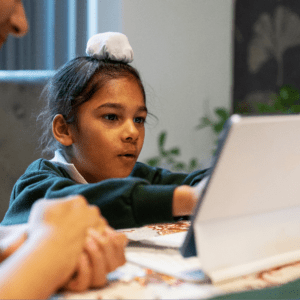Strategies to build rapport with students as a relief teacher:
- Get to know your students’ names.
- Get excited about things.
- Praise your students.
- Find something to like in each of them.
- Be a human, and be someone that they can trust.
One of the most challenging things about being a relief or relief teacher is that the students don’t know you. Sure, not knowing where you will be working the next day, or even if you will be working, can be tough. But one of the biggest benefits of getting more consistent work in only a handful of schools is that you get to know the students, and they get to know you.
It is well known that when the relief teacher is in, the students will often NOT be on their best behaviour. Some teachers will heavily incentivise good behaviour if they have planned to be away, and teachers often make it very clear that they will be asking the relief teacher for a full report, with names, for when they come back. Sometimes as the relief teacher, though, you’re not so lucky, and it feels like there is only so much that you can do.

Getting familiar with each school’s processes and the routines in each class takes some time, but there are a few things that you can do in the short term to help quickly build a relationship and rapport with your students. This relationship is the number one way to get students to behave; if they see you as a person and they can’t help but care, they’re more likely to put some thought into their actions.
1. Get to know your students’ names.
And use them often. I’ll be the first to admit that I’m terrible with names, but it’s something that the students really notice and appreciate. There are strategies that you can use to help jog your memory such as name tags or write them somewhere on their desks, but actually earning their names will have much more impact. There are many fun games that you can ay that will help you get to know the students and their names and help them become more comfortable with you.
2. Get excited about things.
Get excited about their interests. Get excited about the activities set for the day. Get excited about recess and lunch. Showing enthusiasm for the things that your students are interested in will help build rapport, but showing enthusiasm for the activities they need to do will show that you value them and their time.
A strategy that I’ve found particularly effective when teaching a new class is to get them to teach me about the class routines and expectations. Show them that it’s the most exciting thing! Ask some tricky ‘what if’ questions, and sound excited to get started for the day. Showing interest and valuing their time, even if they struggle to appreciate it themselves, shows respect and can quickly build rapport.
3. Praise your students.
Unexpected praise can be a powerful motivator. I remember having the same class as a relief teacher a couple of times, and there was one student in there who could be a bit of a bully. He would yell and pick fights with other students in the middle of the lesson and barely attempted any work.
One day I told him to stay back for a minute after class. When all of the other students had left, I told him that I really appreciated that he gave the task a go. He’d done a good job, especially compared to what he usually does, and I made sure to let him know in a very sincere way without any other students around.

While he was nowhere near a perfect student, he consistently tried harder when I covered his class. I continued to praise him for his hard work, and while he still yelled and tried to pick fights with other students, they were increasingly about defending me. Praise can be an incredible tool for building a relationship and self-esteem, which leads to…
4. Find something to like in each of them.
Depending on who you are and your past experiences, this one can either be really easy or really hard. Being able to find and articulate something that you like in each of your students will very firmly underpin everything that you do with them.
It doesn’t have to be much, but it needs to be genuine. It could be that you like how they stick up for their friends or how they know when they need to remove themselves from a situation and take a break. It could be how enthusiastic they are or that you can always rely on them for an interesting conversation or debate. Make sure, though, that it’s not just a backhanded compliment.
Even if you never tell the students these specific things that you like about them, just having them in the front of your mind when you’re interacting with them will come across. It will influence your mood and your behavior around them, and it can also help your well-being and enjoyment of teaching after a long day.
5. Be a human, and be someone that they can trust.
One thing that never ceases to amaze me is how my students behave when I’m having a bad day. They can push my buttons and test the limits when they want to, but they can be surprisingly well-behaved if I’m having a genuinely bad day.
Making sure that your students see you as an actual human being can go a long way towards building a relationship with them. The critical thing that I’ve found with this is to admit when you’re wrong. If you aren’t sure of something or can’t answer one of their questions, don’t make up an answer. They WILL be able to tell, and they will not appreciate it.
Trust can be especially lacking when it comes to relief teaching. They will think much higher of you if you don’t pretend to be the expert and instead teach them how to figure things out. This will be a much more useful lesson in the long run; teach them how to answer their own questions and teach them that even adults don’t know everything!





